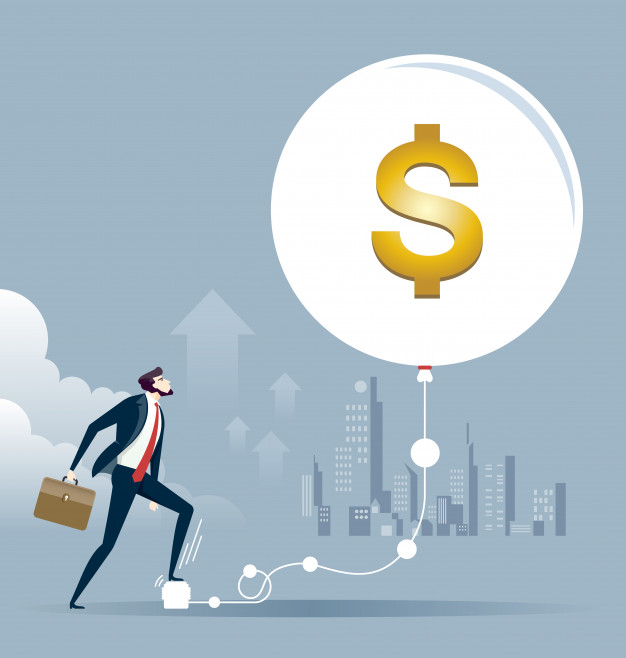
When demand outpaces supply, prices rise. Inflation has come in above expectations.
By Nazarul Islam
Milton Friedman, one of the greatest economists cautioned that Inflation is caused by too much money chasing after too few goods. It is also a form of taxation, without legislation.
There is a simple way to understand the recent rise in America’s inflation: As the pandemic is receding in the U.S., demand for goods and services is rebounding more quickly than the supply of those same goods and services. And when demand outpaces supply, prices rise.
Demand part of this story is obvious. More Americans are shopping in stores, eating in restaurants and contemplating vacations, in this summer. I have currently moved to the beautiful mountain country, the North Carolina to aid my daughter who is doing her Residency in Asheville hospital.
The small town is bustling, with crowded streets and summer time smiles. Traffic reminds me of Miami. The tags on vehicles are largely outside the state of North Carolina. Plazas and malls are full, with shoppers moving happily with their loaded bags.
Obviously, they are spending some of the savings that they accumulated during the pandemic, including money from government stimulus checks. As a local acquaintance shared with me – Demand is not just back but more than back, given the fiscal surge and pent-up savings.
Nationwide supply, however, is not back. The pandemic disrupted supply chains for many items, including computer chips, and household goods; This also disrupted work habits, and not everybody can — or wants to — return immediately to their old jobs.
The taxi and ride-hailing industry is a good example of what happens when rising demand (more travelers) runs up against reduced supply (a shortage of drivers). I read a report in NYT that One rider had recently paid $248 for a trip from Midtown Manhattan to Kennedy International Airport, in Queens — almost as much as his plane ticket to California.
Inflation has come in above expectations. During the meeting, Fed officials updated their inflation forecast, predicted that inflation would remain above 3 percent for much of this year, which is higher than their preferred level of 2 percent. Fed officials also announced that they expected to begin raising interest rates in 2023, sooner than previously planned.
Now, the big question is whether the forces causing inflation to rise are fleeting, as Powell believes is quite likely — or whether they will continue for months and create significant problems for the U.S. economy. Today’s newsletter lays out those two different scenarios.
There however, are some reasons to believe that the mismatch between demand and supply could last for a while.
On the demand side, Americans have money to spend, thanks partly to all the stimulus that the government has pumped into the economy. Look at what’s happened over the past year to the savings rate, which measures the portion of income that households put aside each month:
Although companies are increasing the supply of many products to satisfy rising demand, they may not always be able to keep up. One unknown, as Neil points out, is how many people have decided that they prefer the slower pace of pandemic life and choose not to return to full-time work. A lower labor supply could lead to more competition for workers and to wage increases that would translate into price increases.
If inflation remains elevated for months, it could feed on itself. Companies would increase prices, to cover the higher cost of raw materials. Workers would ask for wage increases, to maintain their buying power. The Federal Reserve might then need to raise interest rates to prevent an inflationary spiral, and rapid rate increase has caused recessions in the past.
Some companies have responded to higher prices, and to the opportunity to make higher profits, by increasing output. To take one example, lumber prices, after rising sharply, are now falling. As the economy is opening back up again, prices are now moving back toward normal levels in leisure, hospitality, airfare and the like.
The coming end to federal stimulus will also serve to reduce demand. The spending from the estimated $1.9 trillion bill that President Biden signed in March will mostly expire by early summer. Once that happens, the decline in government spending will act as a drag on economic growth and help hold down inflation.
The best outcome for most Americans is a growing economy in which incomes are increasing faster than prices, leading to broadly rising living standards. Stable inflation almost certainly needs to be a part of that happy outcome. But it is not enough – An economy with low inflation and weak income growth.
[author title=”Nazarul Islam ” image=”https://sindhcourier.com/wp-content/uploads/2021/05/Nazarul-Islam-2.png”]The Bengal-born writer Nazarul Islam is a senior educationist based in USA. He writes for Sindh Courier and the newspapers of Bangladesh, India and America. He is author of a recently published book ‘Chasing Hope’ – a compilation of his 119 articles.[/author]